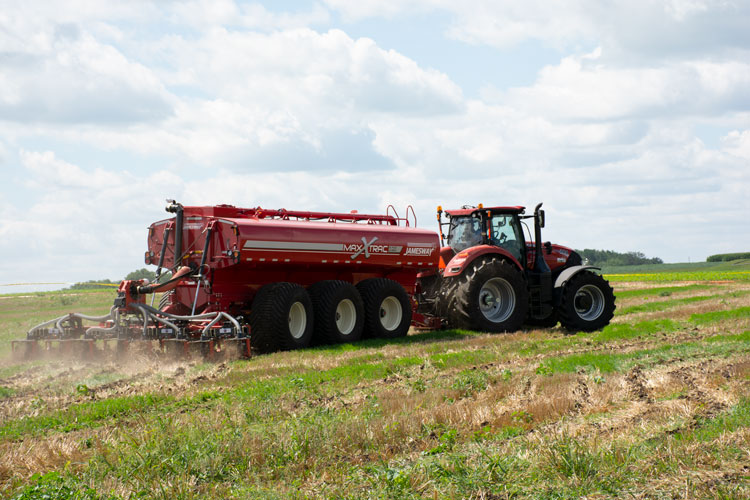
Today’s dairy cows make a lot of milk. They also make a lot of manure. This means that manure storage and handling is a critical aspect for every dairy farm.
USDA’s National Animal Health Monitoring System (NAHMS) recently released the fourth report from the Dairy 2014 study, titled Nutrient Management Practices on U.S. Dairy Operations, 2014. This report gives a snapshot of manure handling on dairy farms from 17 states across the country.
The average number of days farms could store manure was 161.2, and the number of days rose as farm size grew. Smaller farms, with 30 to 99 cows, had enough storage for 116.8 days. For medium farms (100 to 499 cows), it was 170.4 days. On large farms with more than 500 cows, 369.7 days of storage was available.
There was extreme variation in the amount of storage farms had. Nearly 25 percent only had storage for seven days or less. Sixty percent of farms could hold manure for 90 days or more. There were 15 percent of farms that could accumulate manure for more than a year.
Most farms were utilizing this manure as a fertilizer source, as 98.3 percent of operations applied at least some of their solid or liquid manure to owned or rented land. A smaller group, 11.9 percent, gave some manure away, while 7.4 percent reported selling manure or receiving other compensation for it. Just under 5 percent used composed manure for bedding.
About a third (36 percent) of farms that applied manure to land analyzed the nutrient content for nitrogen, phosphorus, or potassium. Farms over 500 cows were more likely to test manure before applying it.
Manure volume and acreage availability was the top reason chosen for selecting an application area. Improving soil quality in a certain field was the second most common answer.
A majority of farms (87.2 percent) utilized a broadcast or solid manure spreader to haul at least some of their manure. Another group, 41.6 percent, used surface application by tank wagon or tank truck. About 10 percent did subsurface injection by tank wagon, tank truck, or tractor, and 7.7 percent used an irrigation/sprinkler method.
Just one-fifth (21.3 percent) of farms said they always or almost always incorporate manure into the soil within 24 hours of application. Manure was sometimes incorporated within a day on 42.8 percent of dairies, while the remainder never incorporated within 24 hours. Nearly three-fourths (72 percent) applied manure to land with actively growing crops, with pastures or hay crops being the most common target.








